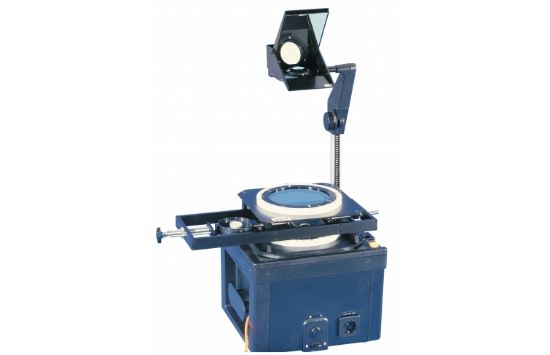Photoelasticity can be used to demonstrate stress profiles and stress concentrations in component models.
The distribution of stress in plane, transparent bodies (plastic models) is investigated using polarised light. Polarising filters represent the stress profiles in colour. The notching and point loading and the criteria dictating component design are clearly visualised.
The FL 210 unit can be used with overhead projectors. Various transparent plastic models are mounted inside a frame. A load application device is used to apply pressure or tensile loads to the model under investigation through a spindle.
An arrangement of polarising filters and quarter-wave filters generates either linear or circular polarised light. A green filter to generate monochromatic light is also part of the scope of delivery. The light source is an overhead projector (e.g. FL 210.01).
The use of monochromatic light produces a system of dark and light stripes, which reflect the distribution and magnitude of mechanical stresses. The models which belong to the scope of delivery represent typical components, permitting experimentation in relation to notching and point loading. The stress profiles shown on the model are identical to those in real-world components.
Additional models are also available to represent stress profiles in roller bearings, tooth flanks, screw connections and wrenches.
All parts of the experiment are clearly laid out and securely housed in a storage system.

